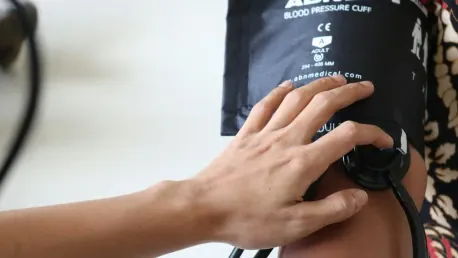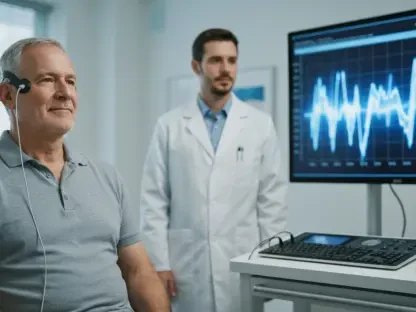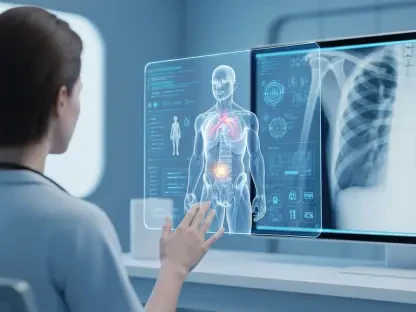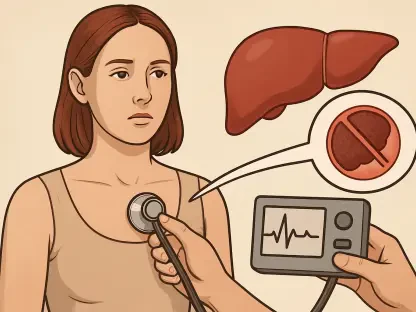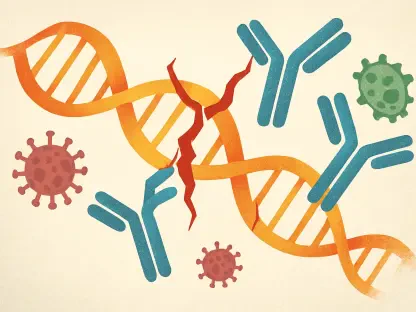The study conducted by researchers from Mass General Brigham reveals groundbreaking insights into the use of artificial intelligence to detect hypertension through electronic health records (EHR). Leveraging natural language processing (NLP), this innovative approach extracts subtle clues from heart ultrasound results, potentially transforming patient diagnosis and treatment protocols.
Exploring the Potential of Electronic Health Records
Hidden Data Within Routine Tests
EHRs contain vast amounts of data collected from routine medical check-ups. Despite the wealth of information, clinicians often face challenges in mastering these records due to their sheer volume. The study underscores the untapped potential of EHRs in providing critical health clues, particularly around conditions like hypertension. With hypertension being a widespread and often silent condition, early detection is crucial to prevent severe health complications. Thus, mining EHRs for hidden data is a significant step toward improving patient outcomes.
The traditional approach to patient care often overlooks the nuanced information embedded in medical records, partly because the sheer quantity of data can be overwhelming for healthcare providers. NLP technology offers a solution by systematically analyzing and extracting actionable insights from these records. In essence, AI helps to sift through the noise, allowing physicians to focus on vital information that may otherwise be missed. The integration of AI into routine medical practices promises a future where undiagnosed conditions like hypertension can be detected more promptly, enabling timely and effective interventions.
The Role of AI and Natural Language Processing
Natural language processing, a branch of AI, plays a crucial role in the study by scanning echocardiogram data to identify signs of left ventricular hypertrophy—a condition commonly caused by hypertension. This approach highlights the growing trend towards automated, data-driven healthcare solutions designed to enhance diagnostic accuracy. The AI processes echocardiogram notes, often written in free text, converting them into structured data that can be analyzed for potential health issues.
This technological advancement not only streamlines the diagnostic process but also ensures that critical information does not go unnoticed amid the extensive data in EHRs. The study showcases how NLP can identify patterns and anomalies within the echocardiogram data, flagging potential cases of hypertension for further investigation. By leveraging the power of AI, healthcare providers can now consider previously inaccessible data, ultimately improving the quality and efficiency of patient care. The role of NLP in detecting conditions like hypertension is a testament to the transformative potential of AI in the medical field.
Impact on Hypertension Diagnosis and Management
Efficacy of Physician Notifications
The study involved a randomized control trial with 648 patients, where physicians in the intervention group were notified of potential hypertension symptoms identified through NLP analysis. The results showed that these physicians were nearly four times more likely to diagnose and appropriately treat hypertension compared to the control group. This shows how NLP-derived insights, when communicated effectively, can significantly enhance diagnostic accuracy and patient care. By providing timely alerts tied to specific health concerns, physicians can focus on relevant patient issues and act swiftly.
In addition to improving diagnosis, the intervention group’s outcomes demonstrated greater engagement in hypertension management, including more frequent prescriptions of antihypertensive medications. The study found that 15.6% of patients in the intervention group received new hypertension diagnoses, compared to only 4.0% in the control group. Furthermore, 16.3% of intervention group patients were prescribed antihypertensive medication, contrasting with 5.0% of the control group. These metrics underscore the benefit of AI-assisted notifications, directing more targeted and efficient care towards patients who might otherwise remain undiagnosed and untreated.
Addressing Healthcare Overload and Burnout
Recognizing the prevalence of alert fatigue among healthcare providers, the study incorporated human coordinators to deliver notifications. This method aimed to ensure the perceived value by both physicians and patients, balancing the automation of AI with human intervention to mitigate clinician burnout. Constant alerts can overwhelm doctors, reducing the effectiveness of notifications. Therefore, using human coordinators helps contextualize AI-generated insights and ensures they reach doctors meaningfully, alleviating the stress associated with incessant digital alerts.
Moreover, these human-coordinated interventions foster a collaborative approach whereby medical professionals feel supported rather than inundated by technology. The study highlights that while AI can enhance patient care, human elements remain crucial in maintaining a balanced and effective healthcare environment. Balancing automated processes with human touch creates a more sustainable model for integrating advanced technologies into daily medical practices. This approach not only mitigates burnout but also maximizes the potential benefits of AI, making high-quality patient care more attainable and efficient.
Broader Implications for Healthcare
AI-driven Insights Increasing Diagnostic Accuracy
The study signifies a pivotal shift towards integrating AI tools with existing medical data, offering an effective method for detecting conditions that often go unnoticed. Such initiatives demonstrate the meaningful impact of AI in improving patient outcomes by identifying health issues early. By analyzing vast amounts of unstructured data within EHRs, AI can surface patterns and predictions that might elude even the most diligent physicians. This results in a higher diagnostic accuracy, potentially reducing the incidence of complications related to undiagnosed hypertension.
Furthermore, the integration of AI-driven insights encourages a proactive, rather than reactive, approach to healthcare. Detecting and managing hypertension at earlier stages can significantly enhance the quality of life for many patients, reducing long-term healthcare costs associated with the late treatment of chronic illnesses. The study underscores the transformative impact of AI, reshaping how healthcare providers utilize patient data, making strides towards a more data-informed medical practice. This approach heralds a new era where technology and human expertise synergize to offer improved diagnostic and therapeutic processes.
Potential for Wider Application and Future Research
While the study showcases a successful intervention at Mass General Brigham, further work is needed to streamline the notification process for broader application. These findings set the stage for future research on the balance between AI-driven insights and human-mediated communication in healthcare, aiming to unlock the full potential of electronic health records in improving patient care. Expanding the research and refining the techniques involved could lead to more standardized protocols across diverse healthcare systems, enhancing the overall efficacy and acceptance of AI in medical practice.
Future research could also investigate the incorporation of other AI methodologies, such as machine learning algorithms, to complement NLP in parsing EHR data for wider application. By continually refining AI technology and its integration into healthcare processes, researchers and healthcare providers can explore new avenues for early detection and management of various conditions. These advancements might pave the way for more sophisticated and automated systems, ultimately improving patient outcomes on a larger scale. Potential future innovations could include real-time EHR updates and alerts, making AI-driven healthcare solutions more dynamic and responsive.
Concluding Narrative
Researchers from Mass General Brigham have unveiled groundbreaking findings on the use of artificial intelligence (AI) to detect hypertension through electronic health records (EHRs). Their innovative study leverages natural language processing (NLP), an advanced AI technology, to extract nuanced clues from heart ultrasound results. This approach could significantly transform patient diagnosis and treatment protocols by providing a more efficient and accurate means of identifying high blood pressure.
Typically, hypertension diagnosis relies on periodic blood pressure readings and patient self-reporting, which can sometimes result in missed or delayed diagnoses. However, by employing AI and NLP to analyze and interpret the vast amount of unstructured data in EHRs, researchers have developed a method that identifies hypertension markers that might otherwise go unnoticed. This advancement holds the potential for earlier intervention and better management of hypertension, ultimately improving patient outcomes and healthcare delivery. The integration of AI in this manner represents a significant leap forward in leveraging technology for enhanced medical diagnostics.
